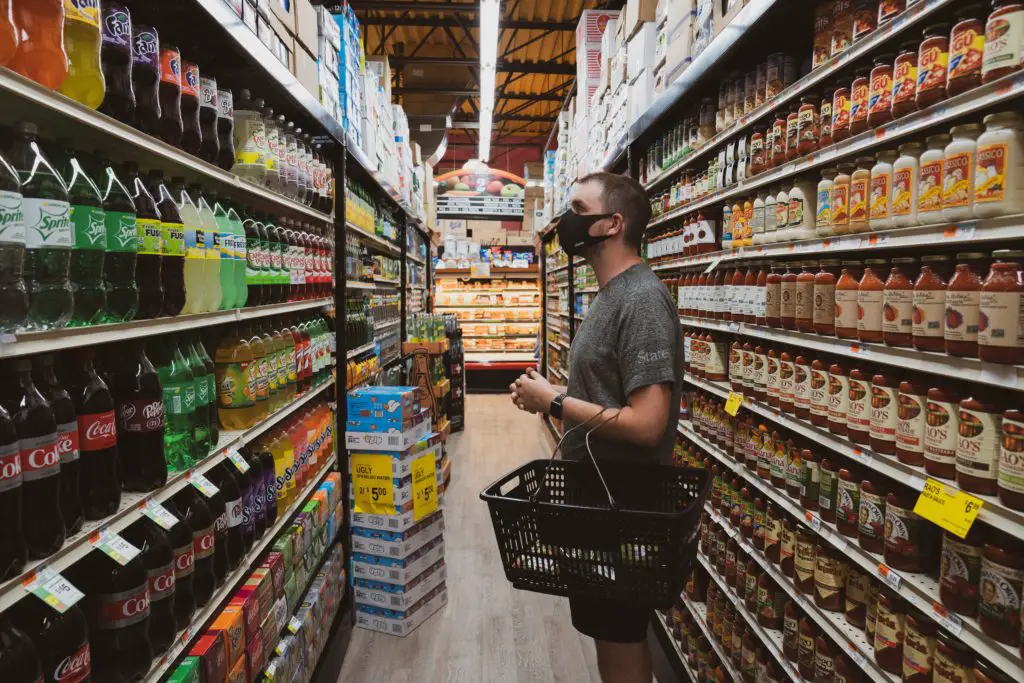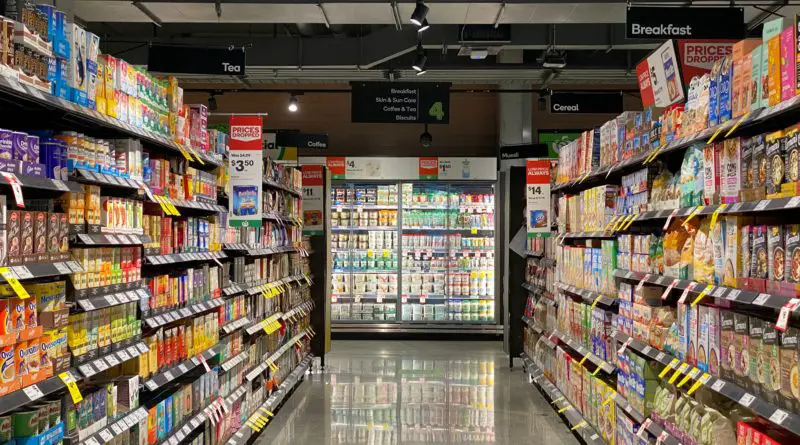Inflation Has Grocery Store Food Prices Rising
We have technically entered a recession. This is defined by two consecutive quarters of negative GDP growth. Also, inflation is over 9% and still accelerating. This has made off brand food products cool again. Shoppers have watched their grocery bills increase each and every month. It is painful. I haven’t eaten spaghetti in months due to the ridiculous ground beef prices. The Off Brand Guy team has been flooded with questions about food prices rising at the grocery store. We offer some of our top tips for slimming down the weekly grocery store bill.
Why Are Groceries So Expensive Right Now?
Inflation is due to many factors including the loose monetary policy of the Federal Reserve, global supply chain disruptions due to the Covid pandemic, and Russia’s invasion of Ukraine. The CPI or consumer price index is an average of many different product categories. If you look specifically at grocery prices you will see that inflation is even higher than 9%. Most families are paying about 12% more for groceries than a year before. This can be difficult for the structured and budget oriented shopper.
How To Save Money At The Grocery Store?
1. Pay Attention To Shrinkflation
Shrinkflation is a sneaky trend. Inflation means that the costs for manufacturers continues to go up. They have no choice but to increase the price or reduce the quantity being sold. Companies know that consumers do not appreciate increasing costs. Especially when the cost of an item never stops going up. So they choose to make the package size smaller. Doritos reduced the bag size earlier this year by about five chips per bag. This may not seem like a lot, but it can really add up.
Companies try to quietly and discretely get away with this. They redesign the packages so consumers don’t notice the reduction. Shoppers hurrying through their grocery store trip may just view it as a logo update or a new and improved package. This is deceptive. Make sure to avoid this trap in the current inflationary environment.
2. Pay Attention To Skimpflation
Another, new trend is skimpflation. This is more applicable for services than products. Rather than increase prices companies will reduce the value of the service being offered. Again, you have to pay attention to pick up on these changes. A common example is hotel chains still using COVID as an excuse to not offer daily housekeeping. This saves huge amounts of money, and you will notice it does reduce the price of a room.
3. Substitute Meat To Save On Higher Grocery Prices
With food prices going up, ground beef is super expensive these days. There is no way around it. Learn how to cook with more economical meat options. This includes chicken and pork. Pork is great for tacos bowls, pasta, and a whole lot more.
Related: How To Store Meat In Freezer And Save Money
4. Sign Up For Walmart+
Walmart + is an underrated service. It is a great solution to food prices rising. It is the Walmart equivalent to Amazon Prime. Walmart will deliver items without the typical $35 minimum. While the Walmart website can be clunky, the prices are consistently better than Amazon. I get tired of sorting through all the fake products and reviews on Amazon. Walmart + allows you to buy name brands and know that you are getting the cheapest price. Yes, the Off Brand Guy just said it is okay to buy name brands sometimes.
Related: Walmart e Receipt: Save Money By Storing Receipts
5. Give Up A Vice To Offset Inflation On Groceries
The most expensive (and wasteful) components of most household grocery bills is alcohol, coffee, and tobacco. These items are expensive and many shoppers don’t even think twice about them. Maybe switch away from the premium coffee beans or stop buying those expensive four packs of locally brewed Hazy IPAs.
Related: Equate Nicotine Gum: Quit Smoking And Save Money

6. Track Food Prices To Understand Grocery Store Inflation
It can be difficult to remember what a can of beans or bag of carrots cost a year ago or two years ago. It is important to track this for frequently purchased items. Things change over time. It may make sense to transition to a different store or a different product brand.
7. Only Get Canned Food At Discount Stores
The local grocery chains like Safeway, Fred Meyer, QFC, etc. seem to increase prices more quickly than the discount stores. I can’t believe the price for a can of refried beans at my local Safeway. Take it from the experts. Soup, canned vegetables, and canned beans should be purchased at discount retailers like Costco, Winco, or Walmart.
Related: What Is An Off Brand Product?
8. Stock Up On Meat At Costco
Meat is one of the categories hit the hardest by inflation. The reason for this is due to many factors including labor shortages at processing plants, a global drought, and the disruption of the global supply chain. The only thing you can do is shop around and get the best deal available. Make sure to stock up when you find a good deal on beef, chicken, or pork. While I can get amazing deals at Safeway when stuff is on sale, Costco is better for consistent pricing.
9. Reflect On Food Waste
Even the most organized shopper will throw out food. It is impossible to be perfect. It is a good habit to reflect on which items you are throwing out every week. Are you throwing out a full bag of spinach of half carton of milk each Sunday? This could be an area to save a few bucks with food prices rising.
10. How To Save Money On Groceries Reddit
Are you looking for even more tips on how to avoid high food prices? Reddit is a great resource. Check out this article, 10 Hacks to Save on Groceries, According to Reddit Users.

